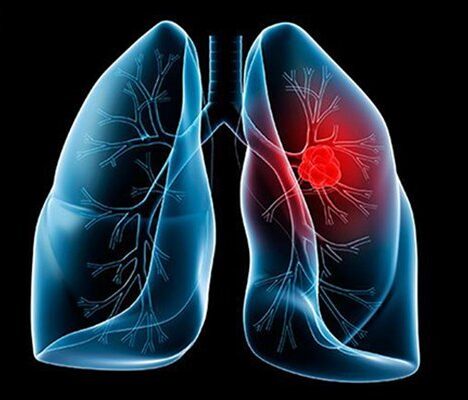Lung cancer
Overview
One type of sickness that originates in the lungs is the cellular breakdown. Your lungs are two delicate organs in your chest that release carbon dioxide when you exhale and absorb oxygen when you inhale. The primary source of malignant growth transmissions worldwide is the cellular breakdown in the lungs. The risk of cellular deterioration in the lungs is most significant for smokers. Yet even in those who have never smoked, cellular research in the lungs can occur. The length of time and amount of cigarettes you’ve smoked affect the likelihood of lung cell analysis.

Causes
Smoking, in both smokers and those exposed to secondhand smoke, is the primary cause of most lung cancers. However, people who don’t smoke and those who have never been exposed to secondhand smoke for a long time are also at risk for developing lung cancer. In certain circumstances, the cause of lung cancer may not always be known.
The two general types of lung cancer include:
Small cell lung cancer: Compared to non-small cell lung cancer, small cell lung cancer nearly exclusively affects heavy smokers.
Non-small cell lung cancer: Several different kinds of lung cancer fall under the general non-small cell lung cancer category. Adenocarcinoma, extensive cell carcinoma, and squamous cell carcinoma are non-small cell lung malignancies.
Complications
Lung cancer can cause complications, such as:
Shortness of breath: The patient may develop breathing difficulties if lung cancer spreads to the central airways. Additionally, fluid can build up around the lungs due to lung cancer, making it more difficult for the affected lung to inflate fully during inhalation.
Coughing up blood: Blood can be coughed up due to bleeding caused by lung cancer in the airways (hemoptysis). In some cases, bleeding might get wrong. Bleeding can be controlled using some medications.
Pain: Pain may be experienced by a patient with advanced lung cancer that has spread to the lung’s lining or another part of the body, including the bone—control pain. Several therapies are available, so let your doctor know if you feel any.
